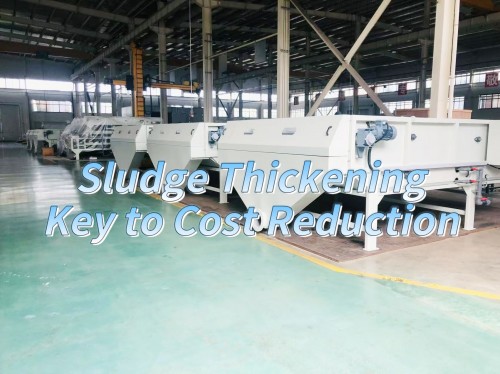In wastewater treatment systems, sludge handling is often the most complex and costly stage. Raw sludge contains a large proportion of water and suspended solids. This makes it bulky and difficult to transport, greatly increasing the energy consumption and cost of subsequent dewatering and disposal.
This is why efficient sludge thickening prior to dewatering plays a vital role in reducing overall costs and enhancing system efficiency. It is arguably the most valuable step in the entire sludge treatment process.
I. Why Is Sludge Thickening So Important?
The main purpose of sludge thickening is to remove excess water, thereby reducing sludge volume and moisture content. Simple in principle, it delivers significant economic and operational benefits:
• Reduces the load on dewatering equipment and extends its service life;
• Lowers energy and chemical consumption;
• Cuts transportation and disposal costs;
• Improves overall system stability.
II. Common Sludge Thickening Methods
Common sludge thickening methods include gravity thickening, dissolved air flotation (DAF), mechanical thickening, and centrifugal thickening – each suited to specific sludge types and operational requirements.
|
Thickening Method |
Principle |
Features & Application Scenarios |
|
Gravity thickening |
Uses gravity to settle solid particles | Simple structure and low operating costs, suitable for municipal sludge treatment. |
|
Dissolved air flotation (DAF) |
Uses microbubbles to adhere to particles, causing them to float | Suitable for sludge from industries with high suspended solids such as printing, dyeing, and papermaking |
|
Mechanical thickening (Belt Type, Drum Type) |
Separates liquid through a filter belt or drum | Features high automation, a compact footprint, and high sludge concentration. |
|
Centrifugal thickening |
Separates solids and liquids through high-speed rotation. | Offers high efficiency but higher energy consumption and maintenance requirements. |
Among these methods, mechanical thickening – such as belt thickeners and rotary drum thickeners – has become the preferred option in modern sludge treatment processes due to its high level of automation, compact footprint, and stable operation.
III. Advantages of Mechanical Thickening
Mechanical sludge thickeners provide distinct advantages in terms of efficiency and cost-effectiveness:
• Achieves high sludge concentration, with solids content reaching 4–8%.
• Continuous and stable operation with a high level of automation
• Compact design and flexible installation
• Easy to maintain and readily integrated with dewatering or storage systems
For wastewater treatment plants requiring long-term stable operation, mechanical thickening effectively reduces maintenance complexity and ensures consistent sludge output performance, making it a reliable and cost-effective choice.
IV. Haibar’s Sludge Thickening Solutions
As a company dedicated to the research, development, and manufacturing of solid-liquid separation equipment for 20 years, Haibar Machinery provides a range of highly efficient, energy-saving sludge thickening solutions, including:
• Belt Sludge Thickener
• Drum Sludge Thickener
• Integrated Sludge Thickening and Dewatering Unit
• For further product details, please visit our Product Centre.
In addition to sludge thickening and dewatering equipment, Haibar can also offer customised configurations such as filtrate collection systems, automatic polymer dosing units, conveying equipment, and sludge silos, providing a complete “from inlet to outlet” solution that ensures greater system stability and simplified maintenance.
Sludge thickening is not merely the first step in wastewater treatment – it represents the key to efficient and cost-effective operations. Choosing the right thickening system means lower energy use, higher performance, and long-term stability. Haibar Machinery remains committed to innovation and quality, providing efficient, reliable, and sustainable sludge treatment solutions worldwide.
Post time: Oct-14-2025
